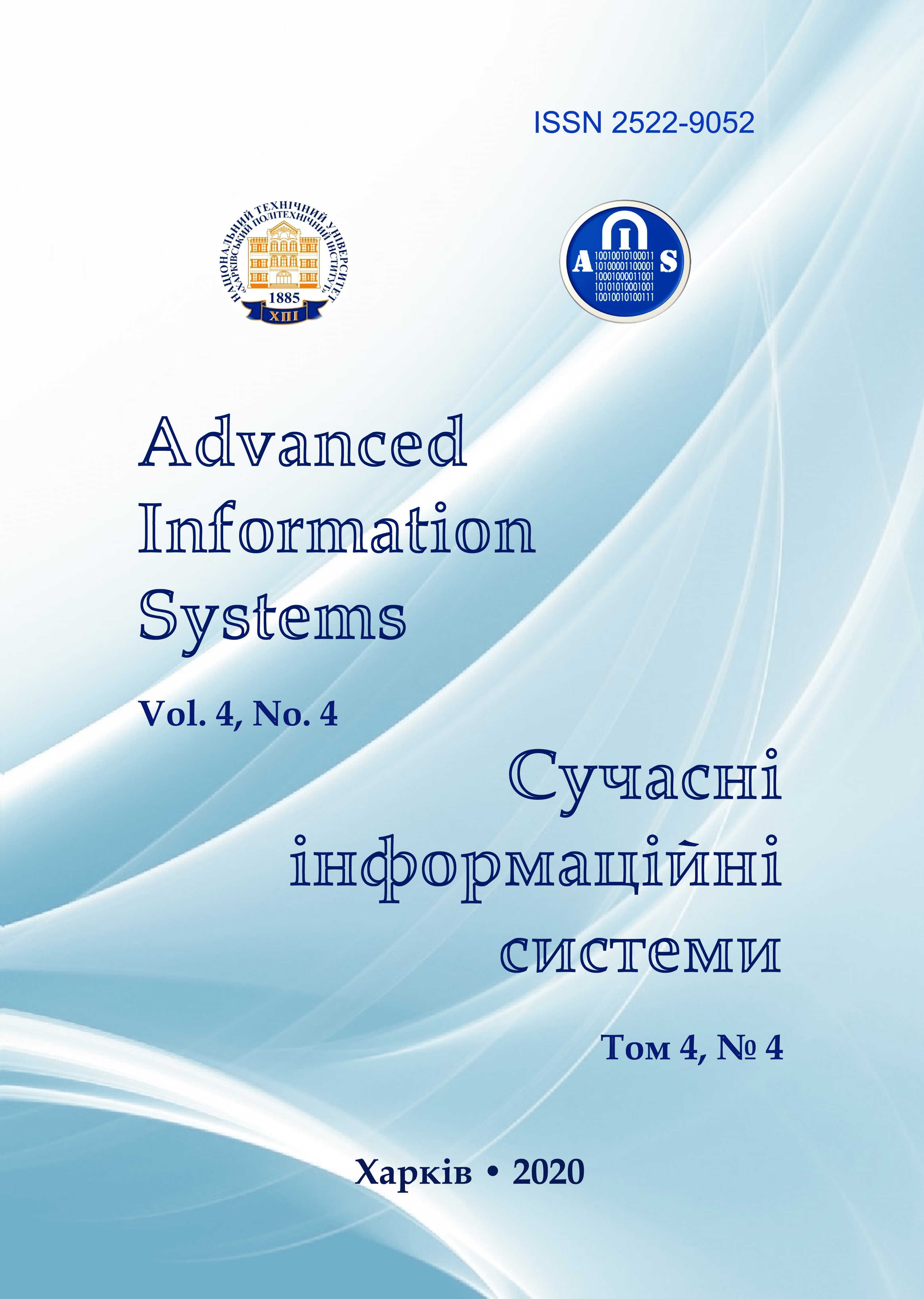COMPARATIVE ANALYSIS OF DIFFERENTIAL INVARIANTS BASED ON THE SPLINE MODEL FOR VARIOUS IMAGE DISTORTION
Main Article Content
Abstract
In the task of finding the features of digital images, it is relevant to determine solutions that provide high processing speed. In the article experimental studies of the application of differential invariants based on the partial image model as a linear combination of B-splines that are close to the average interpolation. Such a model retains the properties of the Gaussian model in the frequency domain, but has less computational complexity, which allows us to better investigate its asymptotic properties and the properties of the corresponding partial derivatives used in the construction of differential invariants. The issue of differences in gradient magnitude, Lapsasian, Hessian determinant, and curvature of the scaling curve during image processing was studied, and the masks of low-frequency filters and operator masks were minimized based on differences of smoothing operators. It has been experimentally proved that smoothing of digital images and reduction of their linear sizes allows to formalize the process of feature selection on the basis of analysis of probability distributions of introduced differential invariants. The suggested approach may be recommended when searching for similar objects containing different images. The approach considered in the work has a low computational complexity, which makes it possible to recommend it for use in systems with a low computation speed, in particular for systems operating on single-board computers.
Article Details
References
Kukharenko, B.G. (2011), “Algorithms of image analysis for determining local features and recognition of objects and panoramas”, Information Technology, No. 7, Appendix, 32 p.
Sobel, I.E. (1970), Camera Models and Machine Perception, PhD Thesis, Stanford University, CA.
Canny, J. (1986), “A computational approach to edge detection”, IEEE Transactions on Pattern Analysis and Machine Intelligence, Vol 8, No. 6, pp. 679-698.
Marr, D.C. and Hildreth, E. (1980), “Theory of edge detection”, Proc. of the Royal Society of London, Vol. 207, Is. 1167, pp. 187-217, DOI: https://doi.org/10.1098/rspb.1980.0020
Schmid, C., Mohr, R. and Bauckhage, C. (2000), “Evaluation of interest point detectors”, International Journal of Computer Vision, Vol. 37, No. 2, pp. 151-172.
Lindeberg, T. (2009), “Scale-space”, Encyclopedia of Computer Science and Engineering, Hoboken, John Wiley and Sons, New Jersey, Vol. IV, pp. 2495 – 2504.
Koenderink, J.J. and van Dorn, A.J. (1992), “Generic neighborhood operators”, IEEE Transactions on Pattern Analysis and Machine Intelligence, Vol. 14, No. 6, pp. 597-605.
Prystavka, P. and Ryabiy, M. (2012), “Model of realistic images based on two-dimensional splines close to interpolation on average”, Science-intensive technologies, No. 3 (15), pp. 67-71.
Prystavka. P. (2004), Polynomial splines in data processing, Dnipropetrovsk Publishing House, Dnipropetrovsk, 236 p.
Prystavka, P. (2015), “Determining the features of images based on combinations of B-splines of the second order, close to the interpolation on average”, Current issues of automation and information technology, Vol. 19, LIRA, pp. 67-77.
Prystavka, P., Tyvodar, O. and Martyuk, B. (2017), “Feature detection for realistic images based on b-splines of 3rd order related to interpolar on average”, Proceedings of the National Aviation University, No. 2 (71), pp. 76-83.
Lowe, D.G. (1999), “Object recognition from local scale-invariant features”, Proceedings of the International Conference on Computer Vision, Corfu, Greece, pp. 1150-1157.
Lowe, D.G. (2004), “Distinctive image features from scale-invariant keypoints”, International Journal of Computer Vision, Vol. 60, No. 2, pp. 91-110.
Pawlak, Z (1991), Rough Sets – Theoretical Aspects of Reasoning about Data, Kluwer Academic Publ., Dordrecht, 246 p.
